- S.D. Eibar ready for maiden La Liga outing
- SD Eibar stengthen ahead of debut La Liga season
- Can ‘Super Mario’ live up to expectations in Madrid?
- MAN IN THE GROUND – Brentford 0 – 4 Osasuna
- Historic Basque derby welcomes S.D. Eibar to La Liga
- Munich to Madrid, via Brazil – Tony Kroos
- Rakitic in Spanish Switch
- Can Spain find redemption in Rio?
- Viva Espana! A season of redemption for Spanish football
- From the old to the new: who can fill the void in years to come for La Roja?
Quixotic Tales of Misadventure and Submarines… (Part One)
- Updated: 9 June, 2012
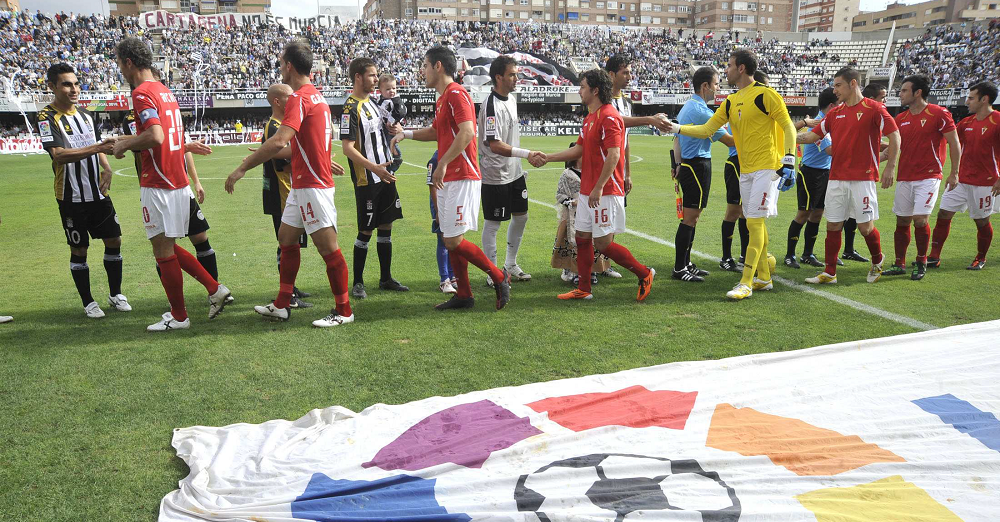
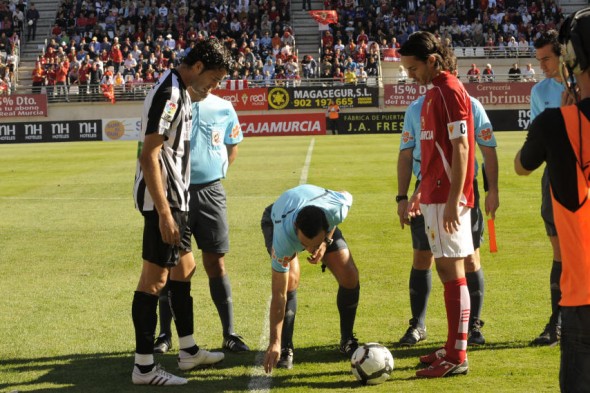
As its extended and convoluted end to the season nears, Spain’s Segunda Division is about to lose two local derbies. The more famous is, of course, the Galician derby from the far North-West corner of Spain. Deportivo La Coruna and Celta Vigo will now both be playing out their battles for regional supremacy in La Primera.
There is, however, also the loss to the division of a less glamorous match up. Travel diagonally right across the country from Galicia to the far South-East of Spain, you will arrive in the unfashionable region of Murcia.
The Region de Murcia is a mountainous and dry area of Spain, beloved by the Moorish rulers of the past, the region still bears many signs of their time here it both its name, dialect and buildings.
Murcia lies very much off the beaten track, save for the various resorts along the coast, where hives of apartments and villas are built, clinging to the shoreline. Even then, the Costa del Sol it is not – with only the resort of La Manga, a particular favourite training centre for British football teams, known to many outside Spain.
Even within Spain, the region is little-known and has long suffered neglect and prejudice – some saying that the industrial revolution never really made an impact here. The years following the Spanish Civil War were particularly hard on the inhabitants, causing mass emigration to other areas of Spain and beyond. According to John Hooper’s book, “The New Spaniards”, due to the sheer numbers of immigrants from the region to the growing city of Barcelona, there was once a large sign as you entered a makeshift shanty-town in the outskirts that proclaimed “Welcome to Murcia.” The negative connotations have been hard to shake off.
It is against this backdrop and amid the region’s apparent isolation, that the two largest towns of the region exist in enmity and kinship. The region’s capital, Murcia, and the ancient port of Cartagena.
The most high-profile derby matches in the region have most recently taken place in La Segunda between Real Murcia and FC Cartagena. It is hardly a match that would stir the passions of most neutrals, certainly not as those of their Galician counterparts might have in their halcyon days of the late nineties and early noughties.
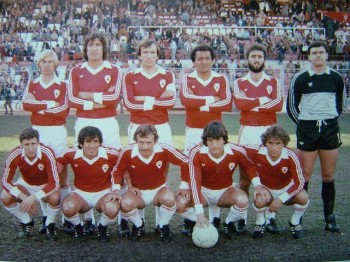 Murcia is a relaxed university city of some half a million inhabitants, in which Real Murcia have plied their trade for around a hundred years. The biggest team in the region, whilst not a “yo-yo” club in the traditional sense, bouncing in and out of divisions, their brief forays in the La Primera Liga are generally followed by long absences (save for a reasonably successful decade in the eighties). They were, however, considered important enough to have been bestowed with the royal seal of approval by King Alfonso XIII in the 1920s.
Murcia is a relaxed university city of some half a million inhabitants, in which Real Murcia have plied their trade for around a hundred years. The biggest team in the region, whilst not a “yo-yo” club in the traditional sense, bouncing in and out of divisions, their brief forays in the La Primera Liga are generally followed by long absences (save for a reasonably successful decade in the eighties). They were, however, considered important enough to have been bestowed with the royal seal of approval by King Alfonso XIII in the 1920s.
It is, however, a sad fact that in recent times, Real Murcia fans have been having a hard time working out just who their rivals are within the region – a result of various opponent’s dissolutions, name changes, new upstart clubs, the follies of crazy chairmen – not to mention numerous promotions and relegations also cutting their features in to the arid landscape. Welcome to Murcia, indeed.
The pueblo, or home town, is traditionally everything to the Spaniard. One would think that this would be played out within the support of local football teams – wearing the badge of the local proudly. However, away from the heartlands of La Primera football, the Madrids, the Barcelonas, Valencias and Bilbaos of the world, this tree of civic pride does not always bear fruit.
A few years back, I was walking through the streets of a Cartagena barrio. The football season was drawing to a climax, with a close title race between those two monoliths of Iberian football, Real Madrid and Barcelona. It was not hard to see where the footballing loyalties of the town’s inhabitants lied. As I write, in this jubilee weekend in Britain, every house seems to be adorned with the Union Flag. In Cartagena at that moment, each house was bedecked in the colours, not of the local side, but of either Real Madrid or of Barcelona – each house seemingly trying to outdo the last in their show of colours – and certainly attempting to outdo the opposition across the street. Flags, Scarves, Posters and Shirts hung out of windows and bunting across the streets.
I found this a strange anomaly, as everyone I spoke to in my time there was at great pains to explain to me, as a proud Cartagenero, how much they dislike they had for all things Murciano. When travelling back to airport, at the sight of the Murcia skyline, Diego, who was driving, unleashed a string of obscenities, just to curse the fact that he was so close to the city.
When local derby day comes around, the usual buzz felt in towns and cities is there – just about – but you have to search to find it, in the supporters club bars or near the stadium. Madrid and Barcelona dominate even here.
 This is an area not concerned with the anti-madridista politics of other regions in Spain. Their clubs are not used in the way that Athletic Bilbao or Barcelona may be, as vehicles to demonstrate a people’s independence or differences. They have also had a constant battle just to stay alive, much like many clubs in the lower reaches of Spanish football. Hardly conducive to producing popular and frenzied support.
This is an area not concerned with the anti-madridista politics of other regions in Spain. Their clubs are not used in the way that Athletic Bilbao or Barcelona may be, as vehicles to demonstrate a people’s independence or differences. They have also had a constant battle just to stay alive, much like many clubs in the lower reaches of Spanish football. Hardly conducive to producing popular and frenzied support.
Footballing instability has reigned in Cartagena for many a year. Driven by a desire to raise their profile above that of Real Murcia, the city has struggled to maintain a high standard of football. Traditionally, the local team was Cartagena FC, who never reached higher than La Segunda. Almost gaining promotion to La Liga in the mid-eighties, the club suffered crippling financial difficulties and folded in the 1996-97 season – by which time, a local businessman, Florentino Manzano had decided to form his own club to rival them.
With a fresh new future promised, Cartagonova Futbol Club was born. They swiftly moved through the divisions and found themselves as the pre-eminent club in the city by 1998, inheriting many of the supporters of the late Cartagena FC.
Unfortunately, mimicking many other clubs in the lower leagues – not least their predecessors, Cartagonova Futbol Club also found that they could not sustain nor progress success – necessitating another bailout from local businesses. A further name-change occurred, rather confusingly to FC Cartagena, and the club colours were changed to resemble the original Cartagena FC Colours of black and white! Is it any wonder that the locals prefer the stability that the el clasico teams offer?
As all this drama unfolded in Cartagena, Murcia was creating its own ragged history. Real Murcia found that the biggest threat to their local bragging rights was to come from somewhere even closer to home.
_____________________________
Read Part Two of Quixotic Tales of Misadventure and Submarines… on El Centrocampista tomorrow
Follow @icentrocampista


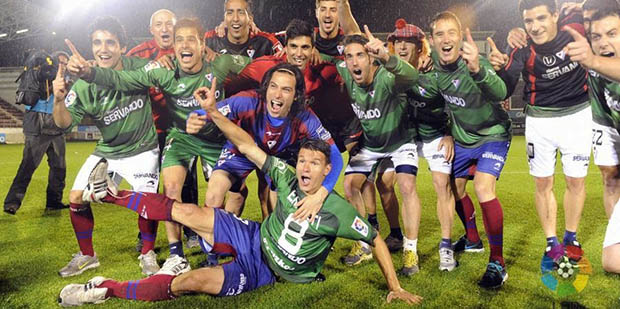
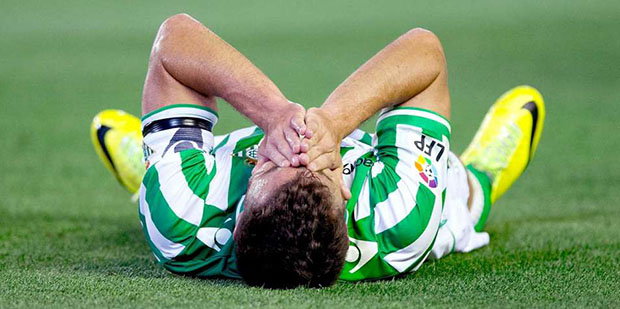


3 Comments
You must be logged in to post a comment Login